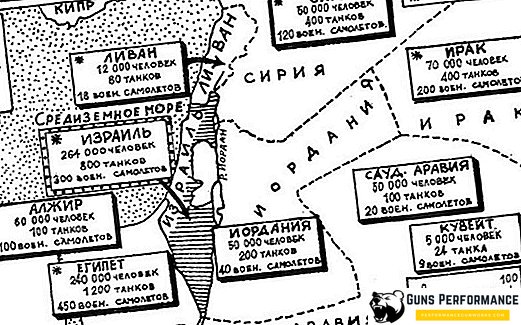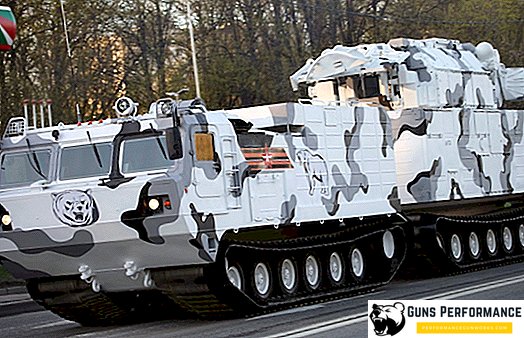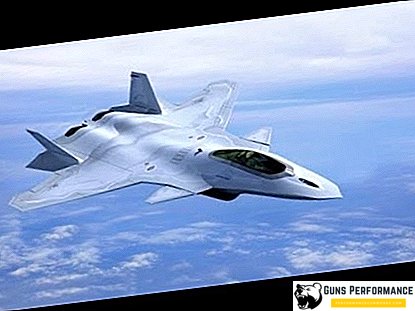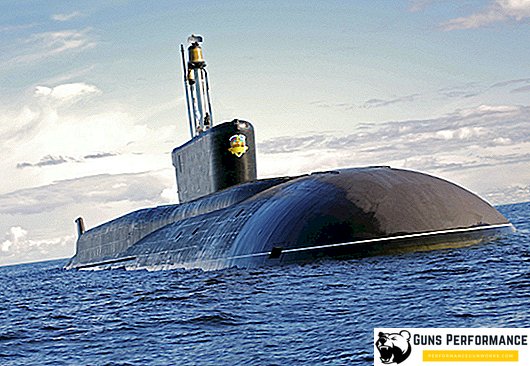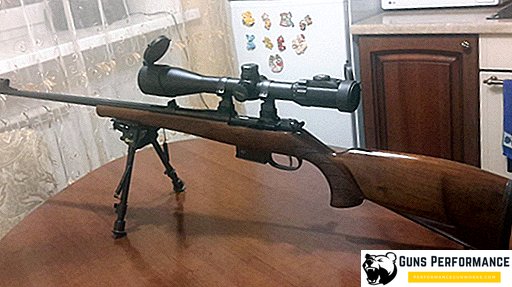
On September 26, 1986, Soviet aviation in Afghanistan first came under the attack of a new weapon - the Stinger, an American portable anti-aircraft missile system (MANPADS). If earlier Soviet attack aircraft and attack helicopters felt like complete masters in the Afghan sky, now they were forced to act at extremely low altitudes, hiding behind rocks and terrain folds. The first use of the Stinger cost the Soviet troops of the three Mi-24 helicopters; in total, until the end of 1986, 23 combat vehicles were destroyed.
The appearance of the Stinger MANPADS in service with the Mujahideen not only seriously complicated the life of the Soviet and Afghan Air Forces, but also forced the command of a limited contingent to change the tactics of fighting partisans. Earlier, spetsnaz detachments were used to fight partisan groups, which were thrown by helicopters into the necessary area. New MANPADS made such raids very risky.
There is an opinion that the appearance of the Stinger MANPADS seriously influenced the course of the Afghan war and significantly worsened the position of the Soviet troops. Although, this question is still very debatable.
In many ways, precisely because of the Afghan war, the Fim-92 Stinger MANPADS became the most famous portable air defense system in the world. In the USSR, and then in Russia, this weapon turned into a real symbol of that war, it fell into literature, and several films have even been made about Fim-92 Stinger.
MANPADS Fim-92 Stinger was developed by the American company General Dynamics in the late 70s, the complex was adopted by the US Army in 1981. "Stinger" is the most famous and popular weapon of its class: since the start of production, more than 70 thousand complexes have been manufactured, currently it is in service with thirty armies in the world. Its main operators are the US, British and German forces. The cost of one MANPADS (for 1986) was 80 thousand US dollars.
The Stinger has gone through a huge number of hotspots. In addition to Afghanistan, this weapon was used during the fighting in Yugoslavia, in Chechnya, Angola, there is information about the presence of Fim-92 Stinger from the Syrian rebels.

History of creation
Transportable anti-aircraft missile systems appeared in the early 60s and were first massively used in the Middle East during the next Arab-Israeli conflict (1969). The use of MANPADS against low-flying airplanes and helicopters turned out to be so effective that, in the future, MANPADS became the favorite weapon of various partisan and terrorist groups. Although, it should be noted that the anti-aircraft complexes of that time were far from perfect, their characteristics were insufficient for the confident defeat of aircraft.
In the mid-1960s, the ASDP program was launched in the United States, the purpose of which was to work out theoretical grounds for creating a new portable anti-aircraft complex with a missile equipped with a full-range seeker. It was this program that launched the creation of a promising MANPADS, which received the designation Stinger ("Sting"). Work on the "Stinger" began in 1972, they conducted the company General Dynamics.
In 1977, the new complex was ready, the company began to manufacture an experimental batch, the tests were completed in 1980, and the following year it was accepted for service.
The first armed conflict in which the Stingers were used was the Falklands War of 1982. With the help of this portable complex, the Argentine Pucara attack aircraft and SA.330 Puma helicopter were shot down. However, the real “high point” of Fim-92 Stinger was the war in Afghanistan, which began in 1979.
It should be noted that for a long time the Americans did not dare to install the latest (and very expensive) weapon to the lightly guided detachments of Islamic fanatics. However, in early 1986, the decision was still made, and 240 launchers and a thousand anti-aircraft guided missiles were sent to Afghanistan. Several types of MANPADS were already in service with the Mujahideen: the Soviet Strela-2M, supplied from Egypt, the American Redeye and the British Blowpipe. However, these complexes were rather outdated and not very effective against Soviet aviation. In 1984, with the help of man-portable air defense systems (62 launches were made), the Mujahideen managed to shoot down only five Soviet aircraft.

MANPADS Fim-92 Stinger could hit planes and helicopters at a distance of 4.8 km and an altitude of 200 to 3800 meters. Arranging firing positions high in the mountains, the Mujahideen could hit aerial targets at much higher altitudes: there is information about the Soviet An-12, which was hit at a height of nine kilometers.
Immediately after the appearance of the Stingers in Afghanistan, the Soviet command had a strong desire to get to know this weapon better. Special detachments were formed, who were tasked with obtaining trophy samples of these MANPADS. In 1987, one of the groups of Soviet special forces smiled good luck: in the course of a carefully prepared operation, they managed to crush a caravan of weapons and capture three units of Fim-92 Stinger.

Shortly after the start of the use of the Stingers, countermeasures were taken, which proved to be quite effective. The tactics of the use of aviation was changed, the planes and helicopters were equipped with systems for setting up noise and shooting off false heat traps. To put an end to the dispute about the role of Stinger MANPADS in the Afghan campaign, we can say that during the fighting the Soviet troops lost more aircraft and helicopters from conventional anti-aircraft machine-gun fire.

After the end of the Afghan war, the Americans faced a serious problem: how to get their Stingers back. In 1990, the US had to buy MANPADs from the former Mujahideen allies, they paid 183 thousand dollars for one complex. In total, 55 million dollars was spent for these purposes. The Afghans transferred part of the Fim-92 Stinger MANPADS to Iran (there is information about 80 launchers), which also hardly pleased the Americans.
There is information that the Stingers were used against the coalition forces in 2001. And even about the American helicopter, shot down with the help of this complex. However, this looks unlikely: for more than ten years, MANPADS had to sit down on batteries and make the guided missile useless.
In 1987, the Fim-92 Stinger was used during a military conflict in Chad. With the help of these complexes were shot down several aircraft of the Libyan Air Force.
In 1991, UNITA fighters in Angola with the help of "Stinger" shot down a civilian L-100-30 aircraft. Passengers and crew members died.
There is information that Fim-92 Stinger was used by Chechen separatists during the first and second campaigns in the North Caucasus, but these data cause skepticism among many experts.
In 1993, with the help of this MANPADS, the Su-24 of the Uzbek Air Force was shot down, both pilots ejected.

Description of construction
MANPADS Fim-92 Stinger is a lightweight portable anti-aircraft missile system designed to destroy low-flying air targets: airplanes, helicopters, unmanned aerial vehicles and cruise missiles. The defeat of air targets can be carried out both on the counter and on the follow-up courses. Officially, the calculation of MANPADS consists of two people, but one operator can also fire.
Initially, three modifications of the Stinger were created: basic, Stinger-POST and Stinger-RMP. The launchers of these modifications are absolutely identical, only the homing missiles differ. The basic modification is equipped with a rocket with an infrared hsn, which is induced by thermal radiation of a running engine.
The Stinger-POST version of the GOS operates in two ranges: infrared and ultraviolet, which allows the rocket to avoid interference and more confidently hit air targets. Modification of the Fim-92 Stinger-RMP is the most modern and has the most advanced features, its development was completed in 1987.

MANPADS of all modifications consists of the following elements:
- anti-aircraft guided missiles (missiles) in the transport and launch container (TPK);
- trigger mechanism;
- sighting device for searching and tracking the target;
- power supply and cooling unit;
- the detection system "friend or foe", its antenna has a characteristic lattice appearance.
The SAM "Stinger" air defense missile system is made according to the aerodynamic "weft" scheme, with four aerodynamic surfaces in the front part, two of which are controllable. In flight, the missile defense system is stabilized by rotation, in order to impart to it a rotational motion of the starting accelerator nozzles are angled relative to the central axis of the rocket. The rear stabilizers are located at an angle, which unfold immediately after the rocket leaves the launch canister.
The missile defense system is equipped with a solid-fuel dual-mode cruise engine that accelerates the rocket to a speed of 2.2 Mach and maintains its high speed throughout the flight.
The missile is equipped with a high-explosive fragmentation warhead, a percussion fuse and a precautionary-actuating mechanism, which ensures the self-destruction of the missile defense system in the event of its miss.
Zour is in a fiberglass disposable container, which is filled with inert gas. The front cover is transparent, which provides guidance of the rocket by IR and UV radiation right in the launch canister. The shelf life of a rocket in a container without maintenance is ten years.
By means of special locks, a trigger mechanism is attached to the TPK, an electric battery is installed into it in preparation for firing. Also, before use, a container with liquid nitrogen, which is necessary for cooling the detectors of the GOS, is connected to the launch container. After pressing the trigger, the gyroscopes of the missiles are started and their GOS is cooled, then the rocket battery is activated and the starting engine begins to work.

The capture of an air target is accompanied by a sound signal that lets the operator know that a shot can be made.
The latest versions of MANPADS are equipped with an AN / PAS-18 thermal sight, which provides the ability to use the complex at any time of the day. In addition, it operates in the same infrared range as the rocket homing detector, so it is ideal for detecting air targets outside the maximum range of the missile attack (up to 30 km).
Ways to fight with Stinger MANPADS
The appearance in Afghanistan of Fim-92 Stinger MANPADS has become a serious problem for Soviet aviation. She tried to solve in different ways. The tactics of using aviation was changed, this applied to both strike vehicles and transport helicopters and airplanes.
The flights of transport aircraft began at high altitudes, where the Stinger's rocket could not reach them. Landing and takeoff from the airfield occurred in a spiral with a sharp set or loss of height. Helicopters, on the contrary, began to cuddle up to the ground, using ultra-low altitudes.
Soon there were systems that worked on the infrared detectors of the GOS of the rocket. These are usually sources of infrared radiation. The traditional way to deceive a rocket is shooting thermal false targets (TLC) with an airplane or a helicopter. However, there are many flaws in heat traps (for example, they are quite fire-hazardous), and it is quite difficult to deceive modern MANPADS using TLC.
Immediately after the shooting of the TLC, the aircraft must perform an anti-missile maneuver, otherwise it will still be hit by a missile.
Another way to protect aircraft from destruction of MANPADS can be to increase their booking. The creators of the Ka-50 Black Shark Russian attack helicopter went this way.
Specifications
Below are the main TTX MANPADS Fim-92 Stinger.
| Defeat range, m | from 500 to 4750 |
| Max. target height, m | 3500 |
| Complex weight, kg | 15,7 |
| Missile launch mass, kg | 10,1 |
| Rocket length, mm | 1500 |
| The diameter of the rocket body, mm | 70 |
| Weight, kg | 2,3 |
| Rocket flight speed, m / s | 640 |


